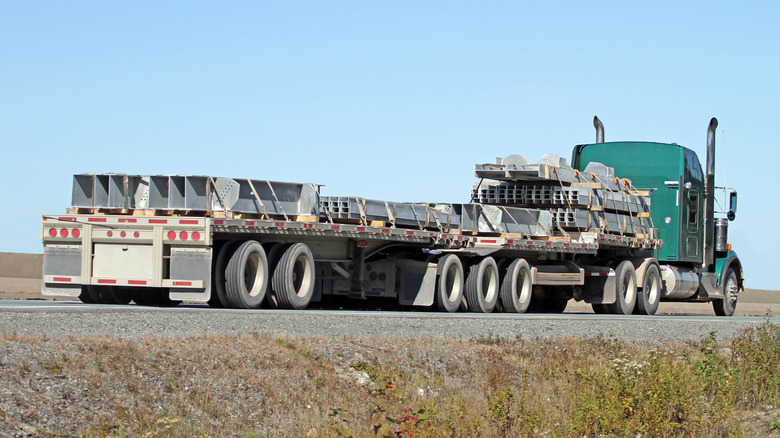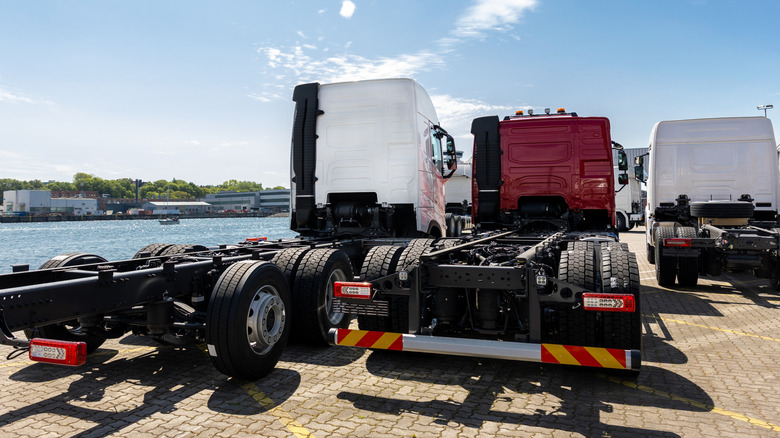Why Do Some Semi-Trucks Have Stretched Frames?
Semi trucks are already massive machines as is, with the average US semi reaching 72 feet and weighing upwards of 25,000 pounds unloaded. They're so big, in fact, that they're even legally required to stop at special weigh stations for safety reasons. Would you believe that they can even exceed these metrics? There's a chance that you may have even come across one that, while not one of the world's largest semi trucks, still is noticeably longer than usual, and that has left you wondering what all that extra length is for.
Typically, this length comes from the semi-truck's frame, or the extended steel section towards the truck's rear that supports the majority of the wheels and cargo. Much of a truck's length is made up of the frame, but in some cases, you'll see them longer than usual on certain semis.
Encountering trucks with such lengthy backsides can be a frustrating experience, as regular-sized semi trucks are already more than capable of slowing down traffic. Longer semi trucks are not only slower, but would also seem less efficient than those that carry lighter loads. While these are valid concerns, the truth is more nuanced.
Stretched frames in some instances can benefit a semi-truck depending on what the truck is carrying and the driver's situation. At the same time, there are some important factors that truck operators must be aware of before making such drastic alterations to their machine.
A longer frame can be easier on trucks and drivers, but not without some precaution
The most significant positive of having a larger frame is an overall better distribution of weight. A frame that is too short means that more cargo weight is improperly distributed across other components of the truck, further straining the machine and shortening its overall lifespan. Having a longer frame is especially crucial when traveling with extra hefty or excessive cargo.
So long as the cargo is properly loaded, it can be more equally portioned out along the truck, while also giving the driver better overall control. Additionally, being able to support larger loads means the truck doesn't have to take as many trips which aids in overall fuel efficiency.
A longer frame can also prove beneficial to the driver. Just as it can with cargo weight, a longer frame is also adept at distributing impacts from sudden bumps and jolts that would otherwise be uncomfortable. The additional space also gives drivers the ability to add in extra amenities such as cab heaters. With that said, drivers still need to take extreme caution when maneuvering in an extra long vehicle.
Being able to make proper turns, maintaining a good distance from other drivers, and navigating hectic weather conditions are difficult enough with an average semi-truck, let alone one with extra length. As a result, it's important that any truck driver taking on such a challenge be well-trained and comfortable before hitting the road. Likewise, it's important to know the specific regulations in your area, as there may be rules to size or permitted driving locations depending on your state, just as with legal semi-truck top speeds.

